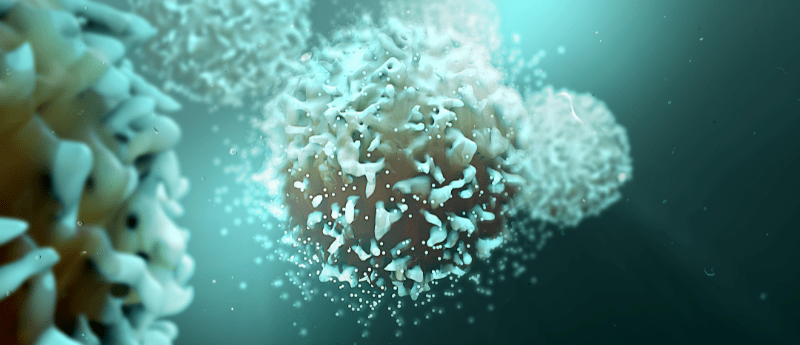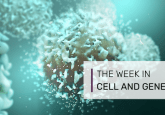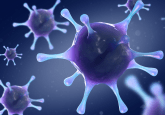Producing ethical regenerative medicine with Industry 4.0: an interview with Bruce Levine

In this interview Bruce Levine (University of Pennsylvania; PA, USA, and President, ISCT) gives insight how COVID-19 has impacted regenerative medicine development, from enabling technologies to public health awareness, and shares why we’re skipping straight to industry 4.0. He also gives us a sneak preview of what we can expect at the International Society for Cell & Gene Therapy (ISCT) Annual Meeting (4-7 May 2022; San Francisco, CA, USA) and discusses the importance of industry-patient communication.
How have the last two years been for the field of regenerative medicine?
Just a few months after the start of the pandemic, everything had to pivot very quickly from in-person to virtual. Some research labs did shut down but, as the restrictions eased, things started to open back up with appropriate measures. There was a delay in some research and clinical trials; sadly, there was a real difficulty enrolling patients as physicians were hesitant to bring patients in if they weren’t going to be able to attend a follow-up appointment. In Autumn 2020, things started ramping back up, and I think the research and the clinical translation enterprise has been close to – if not above – what we across the industry anticipated.
How has COVID-19 changed the way you work?
The development of digital platforms for interacting with one another has certainly been accelerated! People are very comfortable on Zoom, where you can easily hold preliminary conversations, which facilitates global collaboration. I’m hopeful that as we all transition back to in-person working this will continue, and the industry will also be able to push the supply chain so it doesn’t experience a backlog when it comes to experiments and clinical trials.
There has been a consistent focus on public health in the last couple of years; will this continue?
Over the last few years, the general population has developed an awareness of topics such as mRNA, immunity and vaccines. Discussing cell and gene therapy or modifying the body’s response is a more facile conversation than it would have been two years ago. The pandemic also exposed the public to clinical trials and data analysis. There are – of course – differing levels of understanding and one cannot escape the fact that there have been misinterpretations.
I think it’s also important for scientists, clinicians and developers to think about how they communicate. ISCT has previously had the Presidential Task Force on the use of Unproven and/or Unethical Cell and Gene Therapies, which was a mouthful. As President of ISCT, I’ve been advocating to change the name of that taskforce to the Committee on the Ethics of Cell and Gene Therapy; this demonstrates what we stand for and covers all aspects of ethics, not just the shady direct to consumer clinics. ISCT will maintain focus on highlighting unethical clinics, to distinguish from the ethical and clinically validated development.
Why is it important that all stakeholders keep the ethical use of medicines at the forefront?
The cell and gene therapy industry has an obligation to patients and the public to present what is scientifically and clinically validated. There should be a focus on presenting what we can say we know and what we don’t know. The patient to public voice is exceptionally important to help those who may be uncertain. It provides patients with information about what to look for and helps them understand the kinds of questions they should be asking when it comes to advanced therapies.
What is ‘Industry 4.0’ and how does it differ from the existing paradigm?
‘Industry 4.0’ covers a number of needed developments. Firstly, the field is looking at new designs for manipulating cells, delivering genes and designing genes to redirect immune cell specificity if desired, and to incorporate the enhancers for cell function. The second aspect is delivery; if there is gene editing, how is that information being delivered to the cell? The final point is dissemination. There are CGT approvals in North America, Europe, Australia and Japan, and representatives and members of ISCT from all continents, save Antarctica. However, there is some very exciting science going on in south and central America. I serve on the scientific advisory board of a CAR-T cell company in India, whose patients deserve access to CAR-T therapy too. We must all learn across the sector how to adapt ancillary material collection or expensive therapy manufacture so they’re less expensive to provide to as many patients as possible, and ultimately develop CAR-T therapy and other CGT’s that will be at a much lower cost.
What is the main obstacle to delivering CAR-T therapy at a lower cost?
It’s hard to give just one because there are many. I’ve been interested in working towards educating the workforce; because this field is expanding so quickly, there is an urgent need train and educate early stage professionals and to recruit new people from other areas and educate them about the development of these therapies. This has also been a major focus of ISCT during my Presidential tenure. There will be technical obstacles, but I’m confident these can be overcome. It’s exciting to see how many clinical trials there are, but some might question whether duplication is happening. However, there are so many components in the development of these advanced therapies therapy that parallel evaluations to determine the right combination of processes and analytics is required. Another consideration is geography; you must validate not only in Philadelphia, but in Tokyo, in Sydney and in Delhi.
What can we expect from the next ISCT annual meeting?
I’m certain it will be in person in San Francisco! ISCT has a program that will cover all topics from innovation to clinical application and dissemination and access along the translational pathway. On kickoff day May 4, we will be starting off with a series of roundtable events. These will focus on interactive discussions about particular key and hot topics with the goal of both education and problem solving – providing the venue for all stakeholders to join together to find solutions to key issues. We will then hold a series of plenaries; you can find them all posted now on the ISCT website, along with concurrent sessions, abstracts and sponsors.
Is there anything else you would like to highlight?
I always close by thanking the patients for enrolling in clinical trials. I think it’s important that we recognize patients who take part in clinical trials because the sector can’t make progress in the development of new medicines without their participation. Patients are our advocates, and it is important for everyone to learn how to communicate with your friends, family and neighbors about things like COVID vaccines or cell and gene therapy. We are in the era of gene therapy and synthetic biology, so we need to get past that fear of uncertainty by enabling everyone to communicate about these complex topics.
Disclaimer
The opinions expressed in this interview are those of the interviewee and do not necessarily reflect the views of RegMedNet or Future Science Group.




